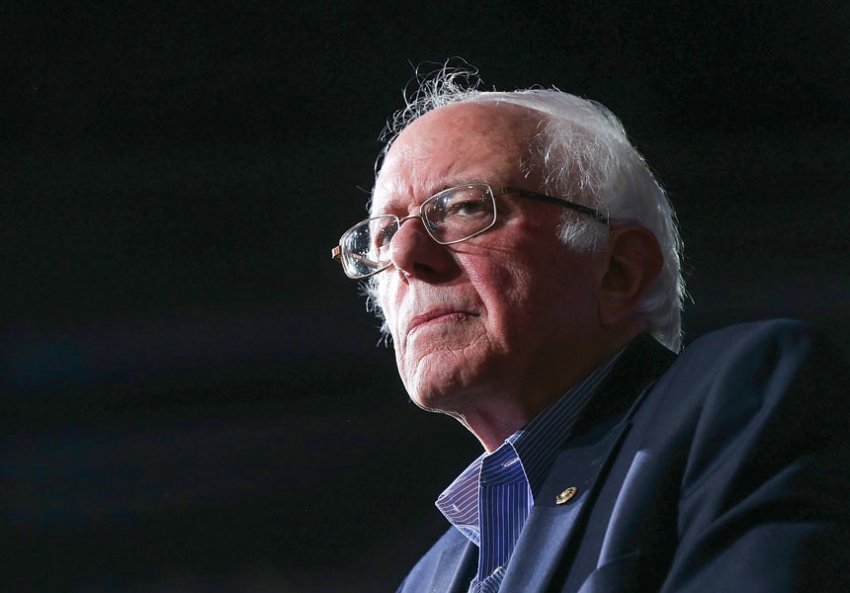“I believe that, as hard as it will be, the change we need is coming, because I’ve seen it, because I’ve lived it.”
“We can seize this future together.”
“If you are willing to work with me … then I promise you change will come.”
President Barack Obama said these things on the campaign trail in 2008 and 2012. His stance didn’t waver; his hope didn’t crumble. President Obama truly believed in “Yes, we can.” And he brought us with him.
He brought us as far as he could, anyway.
Obama believed we would close Guantanamo Bay; he believed we could make college affordable. He believed he could close the tax loopholes that benefit huge corporations at the expense of individuals, that he could push through universal healthcare with lower premiums.
Obama believed we could do all of these things within the system we gave him. He thought he could create change by working inside the establishment, changing the policy that sits atop the current structure of our democracy.
Obama believed in us, as we are. He was a young candidate. His tenure in politics had been relatively short. He had a revitalizing naïveté about him. “Yes, we can” stood for: Yes, we can make our politics work. Yes, we can work inside this box to make them happen together.
It was a powerful message, and it was necessary to pave the way for Bernie Sanders’ message, which is, “No, we can’t. Unless we transform the system.”
Sanders, unlike Obama, is bluntly calling for a political revolution. He is not working around the faults in our system, but laying them bare. The type of change Sanders is using to woo voters doesn’t stay inside our current political box. It is appealing because it tosses that box in the dumpster. And it would not have resonated without Obama’s “Yes, we can” going first and showing us the limits of what is possible within our current constraints.
We look back at that refrain and think, “Well, we tried.” We tried, and we’ve been in gridlock financially and politically for seven years. But we tried. The voter base that leans progressive now has viable proof that we have done everything we can within our system. Congress is in such gridlock that Republican leaders are refusing to hear nominations for a Supreme Court Justice. Because of this, voters are ready for the bold statement, “No, we can’t.”
Bernie Sanders has surprised the country and the mainstream media with his persistent popularity, shooting up from “protest candidate” (as rival Martin O’Malley initially dismissed him) to Hillary Clinton’s only threat.
Having been in politics for decades upon decades, Sanders has no illusions about the presidency or the Congress. As he said on CNN back in 2012:
I think that many people have the mistaken impression that Congress regulates Wall Street. … The real truth is that Wall Street regulates Congress.
He reiterated that sentiment in a Democratic debate in October 2015:
We need to raise the public consciousness. We need the American people to know what’s going on in Washington in a way that today they do not know.
Bernie Sanders came to the campaign trail effectively screaming, “No, we can’t.” No, we can’t—unless we break the corporate chokehold on our democracy. No, we can’t—unless we muster a popular uprising strong enough to transform the structure of our government.
If voters heed this call, if we elect Bernie Sanders as our next president, we know it must also go beyond “the Bern.” A president cannot overthrow core tenets of rotten policy without the political muscle of Congress. As we gear up to vote, we must remember that we’re voting not for one day, or for one year. We tried to let a president do it by himself. This time, we need to give the president not only the White House but a Congress to work with. Because no, we can’t. Not right now.
Sanders is of course no shoo-in for the White House, or even the nomination. But even if we get a President Clinton (or, heaven forbid, a President Trump), we’ve acknowledged how deep our problems run and how we indeed need nothing short of a political revolution.


I plan to continue with the Bernie Sanders Revolution through this phase and the next, even if Bernie is forced to concede his current run. We must do what we can to continue with whatever momentum we have. Feel free to continue the discussion on my FB (Ernie Karhu) page where you can find a variety of links.
ReplyDelete